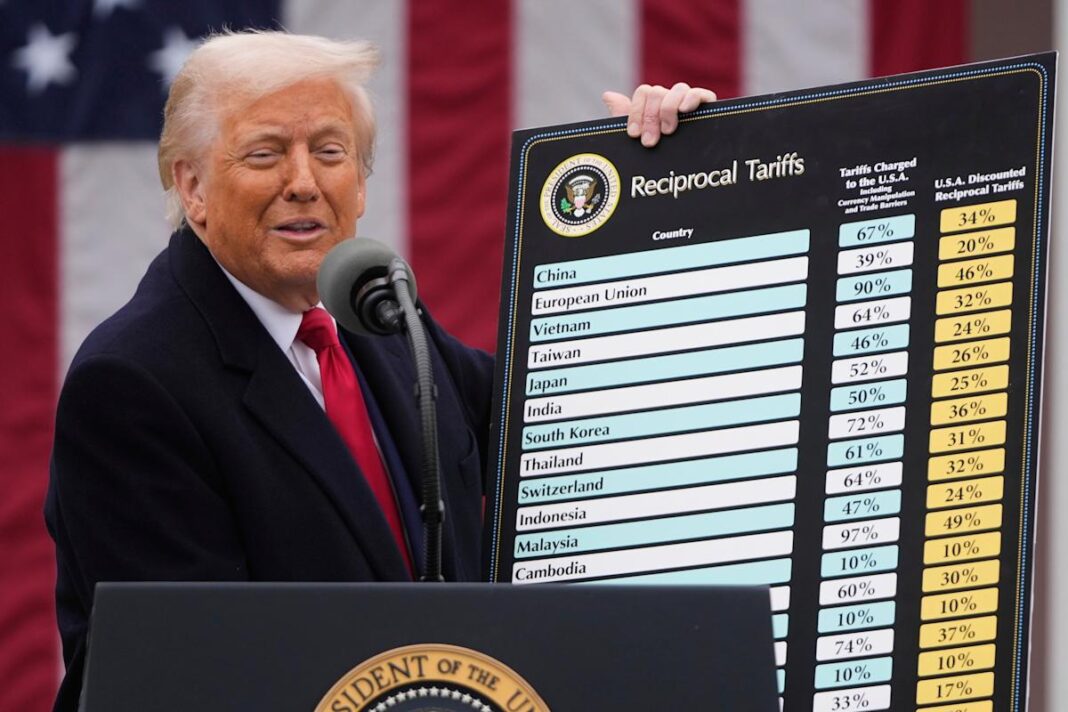## Is Taiwan-US trade the key to unlocking shared prosperity? The world is watching as tensions simmer between the US and China, with Taiwan at the heart of the storm. But amidst the geopolitical chess game, a powerful message is emerging from the American business community: Taiwan-US economic partnership is not just beneficial, it’s crucial for shared prosperity. After years of escalating tariffs, a leading US business group is boldly declaring that deepening ties with Taiwan will be a win-win for both nations. This article dives into their compelling argument, exploring how Taiwan’s strategic position and economic prowess can fuel a brighter future for American businesses and workers.
Implications and Analysis
The recent investments from Taiwan-based companies, such as TSMC, and US-based companies, like Apple and Nvidia, are expected to have significant implications for the US economy and job market. According to President Trump, these investments will create over 100,000 American jobs, a significant boost to the US economy.
Job Creation and Economic Growth
The job creation potential from these investments is substantial. With companies like Apple planning to hire 20,000 people and TSMC investing $200 billion in advanced semiconductor manufacturing, the impact on the US job market will be felt across various industries. This influx of new jobs will not only benefit the tech industry but also have a ripple effect on other sectors, contributing to the country’s overall economic growth.
The impact on the US economy will be significant, with the potential to increase the country’s GDP. According to some estimates, these investments could add up to 1% to the US GDP, a substantial contribution to the country’s economic growth. This growth will also have a positive impact on the country’s tax revenue, providing more resources for the government to invest in public services and infrastructure.
Industry Trends and Competition
The shift in global supply chain dynamics is another significant implication of these investments. With companies like TSMC and Apple investing heavily in the US, the country is poised to become a major hub for advanced manufacturing and technology production. This shift will have a ripple effect on the global supply chain, with other countries likely to follow suit and invest in their own domestic manufacturing capabilities.
The competitive advantage for US-based companies will also increase, as they will have access to the latest technology and manufacturing capabilities. This will enable them to produce high-quality products more efficiently, making them more competitive in the global market. The increased competition will drive innovation, leading to better products and services for consumers.
Practical Aspects and Future Outlook
Challenges and Opportunities
While the investments from Taiwan-based companies and US-based companies are significant, there are also challenges to implementing these investments. One of the major challenges will be finding and training a skilled workforce to meet the demands of these new manufacturing facilities. Additionally, the companies will need to navigate the complex regulatory environment in the US, which can be time-consuming and costly.
Despite these challenges, the opportunities for growth and expansion in the US market are substantial. With the latest technology and manufacturing capabilities, companies will be able to produce high-quality products more efficiently, making them more competitive in the global market. The increased competition will drive innovation, leading to better products and services for consumers.
What’s Next?
The future investment plans and announcements from other companies will be closely watched, as they will provide insight into the long-term implications of these investments on the US economy. With companies like Oracle and SoftBank already committing to significant investments, the potential for further growth and expansion is substantial.
The long-term implications of these investments on the US economy will be significant, with the potential to increase the country’s GDP and create thousands of new jobs. As the US becomes a major hub for advanced manufacturing and technology production, the country will be well-positioned to take advantage of future growth opportunities.
Conclusion
In conclusion, the article highlights the pivotal role Taiwan plays in driving shared prosperity with the United States, as emphasized by a prominent US business group. The removal of tariffs on certain Taiwanese products has been hailed as a significant step forward, underscoring the symbiotic nature of the bilateral trade relationship. By fostering a more open and reciprocal trade environment, both nations can reap substantial benefits, including increased economic growth, job creation, and enhanced competitiveness.
The significance of this development cannot be overstated, as it sends a powerful signal about the commitment of both countries to free and fair trade. As the global economy continues to navigate the complexities of the post-pandemic era, the Taiwan-US partnership serves as a beacon of hope for a more collaborative and prosperous future. Moreover, this development has far-reaching implications for the Asia-Pacific region, where Taiwan’s strategic location and economic prowess make it an indispensable partner for the United States.
Looking ahead, the Taiwan-US partnership is poised to drive innovation, entrepreneurship, and sustainable growth, shaping the contours of a new era of cooperation and mutual benefit. As the world grapples with the challenges of the 21st century, this partnership serves as a powerful testament to the transformative power of free trade and diplomacy. In the words of the US business group, “Taiwan is a critical partner for the United States, and we believe that our two nations can work together to drive economic growth, create jobs, and promote peace and stability in the Asia-Pacific region.” As we embark on this new chapter in Taiwan-US relations, one thing is clear: the future of prosperity is being written, and it is being written together.
